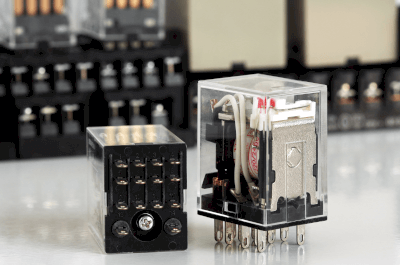What Is an Auxiliary Relay?

An auxiliary relay, or electromagnetic relay, controls the opening and closing of its contacts through an electromagnet. Functioning similarly to electromagnetic switches, auxiliary relays differ in contact configurations, facilitating precise control in protective and control relay circuits.
Uses of Auxiliary Relays
Employed primarily in control circuits, auxiliary relays enhance the reliability of contact connections, supporting applications requiring low energizing currents (under 10A). They’re pivotal in safety mechanisms like interlocks, ensuring operational control under specific conditions, and enhancing ground fault detection to prevent accidents.
Principle of Auxiliary Relays
Auxiliary relays incorporate make (a-contact), break (b-contact), and transfer (c-contact) contacts to manage circuit connections effectively. This versatility allows for adaptive use in various electrical configurations.
Structure of Auxiliary Relays
Comprising a coil wrapped around an iron core, an electromagnet, and contacts, auxiliary relays activate circuits by magnetically pulling together movable iron pieces, enabling contact closure. Their design often includes a twin-contact structure for improved reliability, especially for minute electrical loads.
Characteristics of Auxiliary Relays
Auxiliary relays are notable for their diverse contact configurations, accommodating from 2 to 16 contacts to meet specific circuit requirements. They are designed for a range of voltage specifications, ensuring compatibility with different electrical systems. The compact, lightweight design supports easy installation and high contact reliability, making these relays suitable for various applications, including space-constrained control panels.